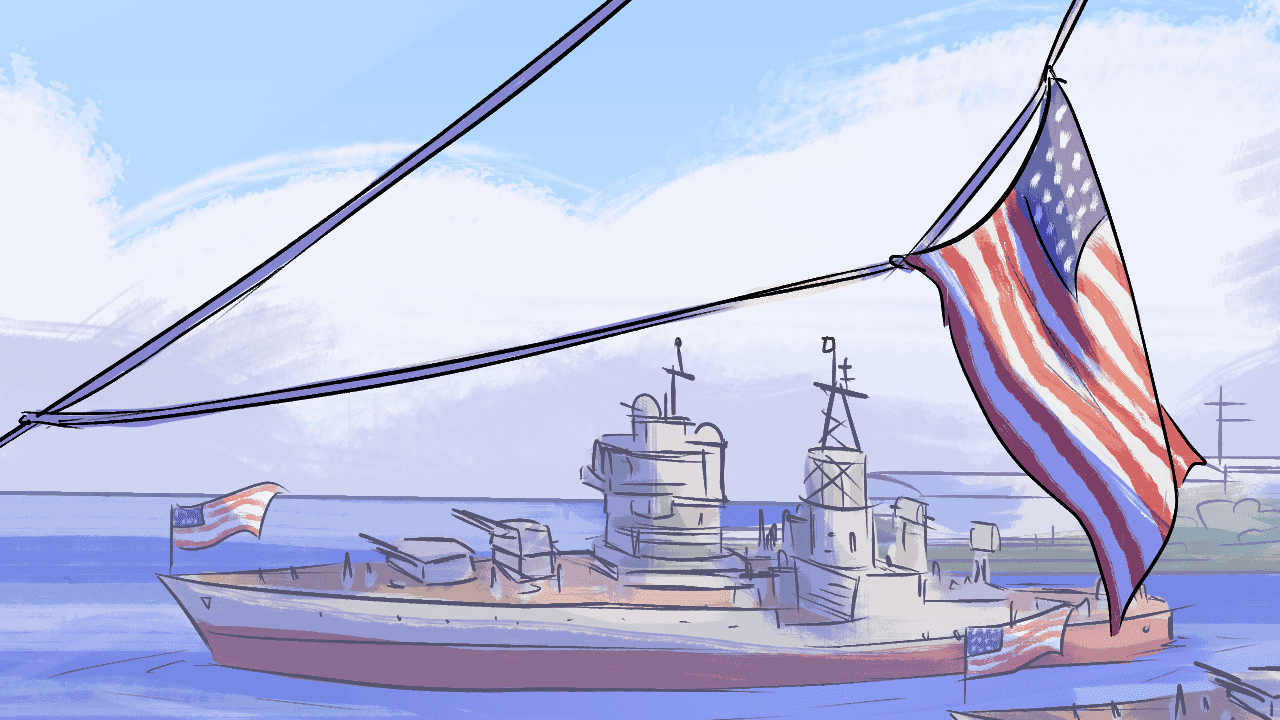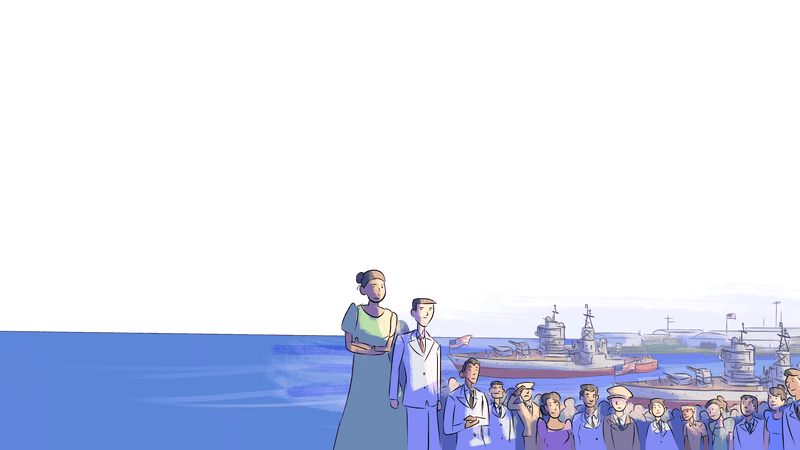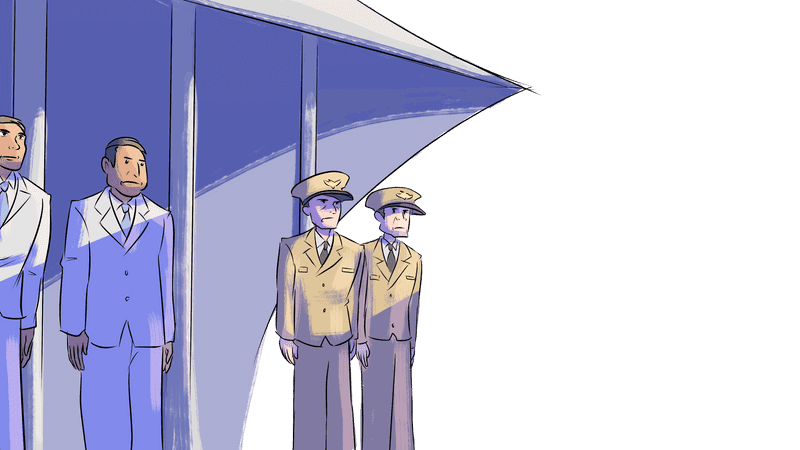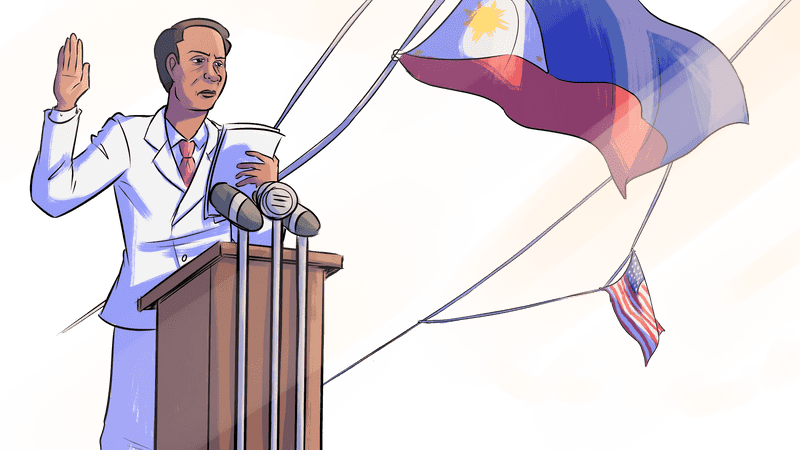Chapter Three: Promises Made, Promises Broken
July 6, 1946
Independence Day
U.S. Officials lowered the Stars and Stripes and raised the flag of the Philippine Republic.
Filipinos struggled for generations to gain national independence. They filed petitions, gave speeches, staged demonstrations, and took up arms. Finally, on July 4, 1946, they achieved their goal. At a ceremony at the Luneta, the main square of the capital city of Manila, U.S. officials lowered the Stars and Stripes and raised the flag of the Philippine Republic. Manuel Roxas took power as the first President of the new republic.
Manuel Roxas
January 1, 1892 – April 15, 1948
First president of an independent Philippine Republic recognized by the United States
Born in Capiz in 1892, Manuel Roxas was one of the most influential Philippine politicians during the colonial and commonwealth eras. With Sergio Osmeña, he traveled to the United States in 1931 to lobby for Philippine independence. The resulting legislation, the Hare-Hawes-Cutting Act, would ultimately be rejected by the Philippine legislature, spearheaded by an envious Manuel Quezon. But their efforts laid the groundwork for Quezon’s negotiation of the 1935 Tydings-McDuffie Act, setting a ten-year timetable for Philippine independence. Roxas served in the occupation government during WWII. Though he claimed to have passed intelligence to Philippine guerrillas, many remained suspect of his service during the occupation. Backed by the support of Douglas MacArthur, Roxas won the presidential election and was inaugurated during the independence ceremony on July 4th, 1946.
A Nation Founded
The promise of independence was first made by the U.S. Congress in the Jones Act of 1916. Then followed the ten-year plan set out by the Tydings-McDuffie Act of 1934. Japan offered an empty declaration of independence in 1943 in the middle of its wartime occupation. Ultimately independence was won by Filipino and American soldiers fighting together on the battlefields of World War II.
The two countries would not, however, go their separate ways. There were bonds between soldiers who had fought together. There were family ties between Filipino Americans and their relatives back home.
U.S. and Filipino USAFFE servicepeople share a laugh for the camera. U.S. National Archives
Yet with every step that granted a political concession to the Philippines, the United States took something away. Legal agreements between the U.S. and the Philippines gave Americans considerable power over the new country. Trade regulations tied the Philippine economy to American interests.
Filipinos also found the path to immigration closed. Offices that processed their paperwork mysteriously closed, their officials recalled to the United States. Ever since 1934, Filipinos had been defined in U.S. law as foreigners rather than U.S. nationals. Most were barred from naturalizing as U.S. citizens. The Luce-Celler Act, adopted by the U.S. Congress on the eve of independence in 1946, lifted that ban in theory, but changed very little in fact: The law restricted Filipino immigration to just 100 persons per year.
The military affairs of the two nations also remained bound together. Opportunities to serve in the U.S. armed forces shifted. The Philippine Scouts—a U.S. Army unit established in 1901 during the Philippine-American War—was phased out soon after independence.
Filipinos could continue to join the U.S. Navy, albeit restricted to low-ranking service positions, most notably as messmen, who cooked the Navy’s food, and stewards, who acted as personal servants to Navy officers.
Although hundreds of thousands of American troops left the Philippines after V-J Day ended the war with Japan, the U.S. forces did not leave completely. The Military Bases Agreement of March 1947 gave the U.S. access to 23 basing sites in the country, including the large facilities maintained by the U.S. Navy at Subic Bay and the U.S. Air Force at Clark Air Base.
The Philippines now had its own military—the Armed Forces of the Philippines (AFP)—which comprised a large army, a small navy, and an air force. The AFP reflected much that Philippine officials had tried to build in the days before Pearl Harbor.
But the country’s military remained tied to the United States, with a dependence on U.S. equipment, training, and financial support—including a promise of $200 million in military aid. A Mutual Defense Treaty signed in 1951 formalized the alliance between the two countries. If this was independence, it definitely came with strings attached.
If this was independence, it definitely came with strings attached.
Next Section
1945 – 1946
Promises Made
Like soldiers and sailors everywhere who fought under the American flag, Filipinos earned the benefits they were promised. Or so they believed.
Explore



